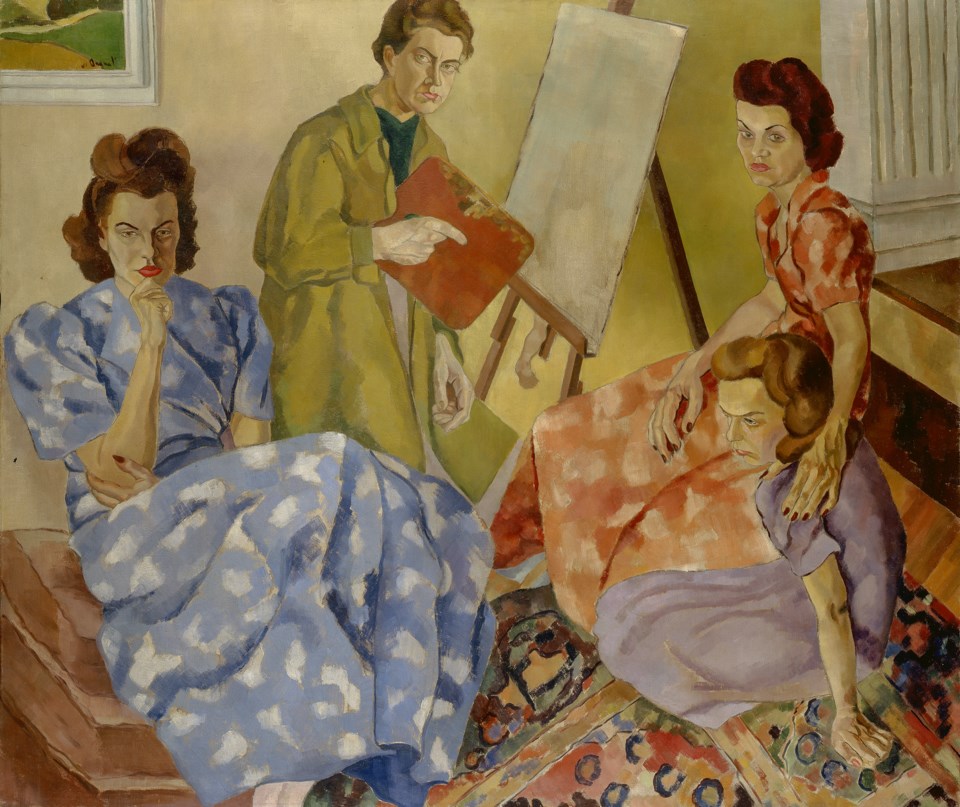Any Canadian art lover is familiar with the undulating skies and towering trees of Emily Carr's landscapes. But how about Prudence Heward's portraits or Margaret Watkins' photography? If those names don't ring a bell it's because Canadian women artists have been historically left out of museums, relegated to the occasional small catalogue or posthumous recognition.
The Â鶹´«Ã½Ó³»Art Gallery's newest exhibition, , aims to change that.
A massive undertaking led by McMichael Chief Curator Sarah Milroy, Uninvited gives Canadian women artists from the 1920s to 40s their rightful due with an exhibition of over 200 works of art. Paintings, photographs, sculptures, weaving, and beadwork from across the nation come together in the space to provide a broad and diverse account of female creativity in Canada.
Originally conceived in response to the Group of Seven's centenary in 2020 (the Seven never invited a woman into their club) Uninvited moves beyond the tradition of landscape painting that made male artists of the time so famous. Instead, the featured women artists of the period tackled themes such as human psychology, urbanization, industrialized resource extraction, Indigenous culture and displacement, environment desecration and the immigrant experience.
"The women artists in this period were basically looking at everything that their male colleagues were not,” says Milroy. “The settler women artists saw a nation in flux and went out of their way to respond to those changes."
Assembling such a wide survey of Canadian women artists was no easy task. Because few pieces were widely sold or shown in museums during the artists' lifetimes, much of the work remained in private collections and in some cases under the bed, literally. Take Kathleen Munn, whose work tells the story of Christ through a series of ink and graphite sketches that show her mastery and exploration of Cubism and dynamic symmetry, among other artistic movements. Her drawings were only found by chance when someone involved in the project visited one of her descendants.
Munn's work was stored in their home, below beds and stacked in closets.
"We see an advanced modernist engaging with the most traditional subject, it's incredibly intriguing," says Milroy. "And to think we could have lost this woman's work if not for that encounter. This is how slender the ties are to these artists and how precarious their legacies are."
When pulling settler women artists back from this precipice of memory, Uninvited importantly features work by a number of Indigenous women from the period as well, including Attatsiaq of Arviat, Nunavut; Sewinchelwet (Sophie Frank) of the Sḵwx̱wú7mesh Úxwumixw (Squamish Nation); Mi’kmaq quill box maker Bridget Ann Sack of Shubenacadie, NS; and Rose Runner of the Tsuut’ina First Nation, near Calgary, Alberta. Incorporated throughout the gallery, the Indigenous works reflect the geographic importance of where they were made and begin discussions with the settler women's work.
A case of Coast Salish baskets from a number of communities accompanies a wall of Emily Carr's paintings, which appear in the very last room of the exhibition. Carr's work, which focuses on clearcut landscapes and resource extraction, stands in stark comparison with the sustainably made Salish baskets. Milroy describes the baskets as a "condensation of generations of cultural knowledge" in relation to the land.
"What we are trying to suggest to people is that this is a totally different way of relating to the landscape," she says. "The cultural knowledge of the basket makes for an incredibly poignant contrast to the Carr works of clearcutting."
In Milroy's view, these pieces and all the other work gathered in the gallery mark the beginning of a paradigm shift in how Canada sees women's work.
"How can it be this show hasn't happened before?" she asks. "We are building a battering ram. We are making an exhibition that makes it irrefutable that we need to look at Canadian art history in a different way. It's a massive lift."
Uninvited: Canadian Women Artists in the Modern Moment is on view for a limited time from June 11, 2022, to January 8, 2023, at the Â鶹´«Ã½Ó³»Art Gallery.

